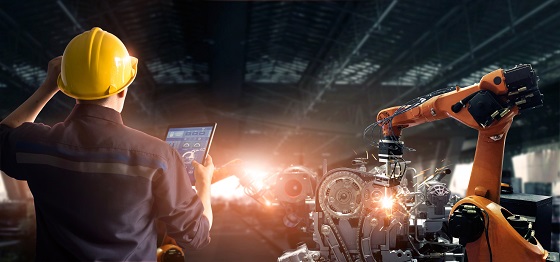The global robotics market is forecasted to witness a substantial expansion by USD 22.27 billion between 2022 and 2027, growing at a Compound Annual Growth Rate (CAGR) of 7.71%, according to recent market research by Technavio.
The robotics domain is marked by a multitude of players, both global and regional. Some of the notable entities include ABB, Clearpath Robotics, Cyberdyne, DENSO, FANUC, GEA Group AG, Honeywell International, Intuitive Surgical, Kawasaki Heavy Industries, KION GROUP AG, L3Harris Technologies, Lely International NV, MIDEA Group, OMRON, Relay Robotics, SMP Robotics Systems, Teradyne, The Boeing, Zebra Technologies, and Irobot.
Industry
The industrial sector’s share in the robotics market is predicted to experience considerable growth. This surge is attributed to the sector’s myriad applications, including material handling, assembly and disassembly, welding, and more. To gain a competitive edge, companies are placing greater emphasis on production efficiency, operational excellence, and competitive advantage. Adopting robotics has been a strategy to cut down costs, reduce human interaction for safety reasons, and enhance production rates.
Asia-Pacific
The Asia-Pacific region is anticipated to constitute approximately 49% of the global market growth within the forecast period. This dominance stems from government interventions, rising demands for locally produced automobiles, and a robust manufacturing foundation. Especially in nations such as China and India, automakers are bolstering their investments in plant automation solutions to augment productivity and trim down production cycles. This strategy furnishes them a competitive edge over counterparts. Consequently, as manufacturers replace obsolete equipment and reduce dependency on manual labor, the appetite for robotics is bound to grow.
Driving Factors
The growth in the robotics market is fueled by several factors:
– A growing emphasis on health and safety regulations.
– The industry’s shift towards adopting robotic material handling equipment for improved personal safety and reducing occupational hazards.
– Businesses are recognizing the potential risks posed to human workers, especially in industries like automotive and heavy oil chemicals, which involve challenging work conditions and exposure to hazardous substances. Such circumstances can lead to workplace accidents, product damages, and alterations in material properties, pushing companies towards robotics to bolster worker safety.
Challenges
European government initiatives aimed at amplifying the robotics industry have emerged as a key market trend. However, the market does face some headwinds, with a dearth of skilled personnel recognized as a primary challenge stymying the sector’s growth.

